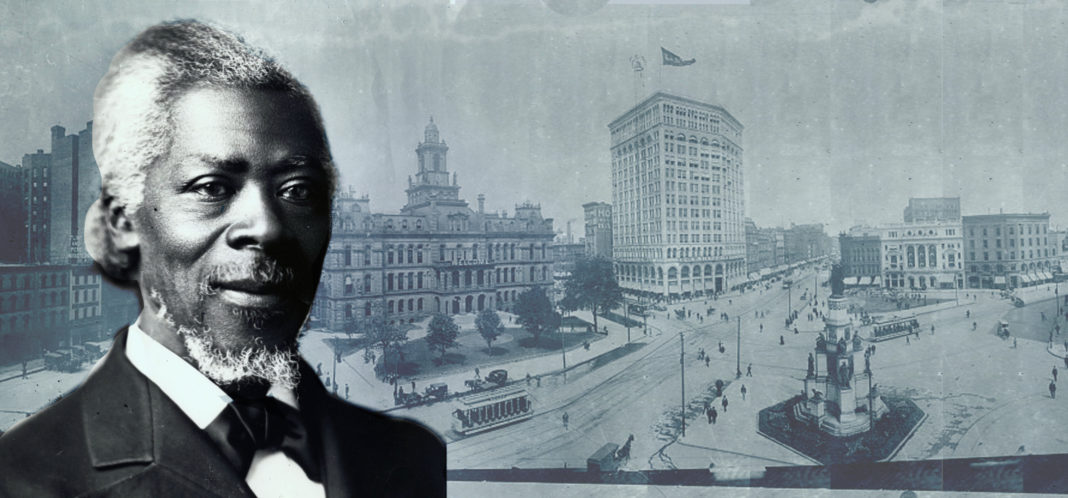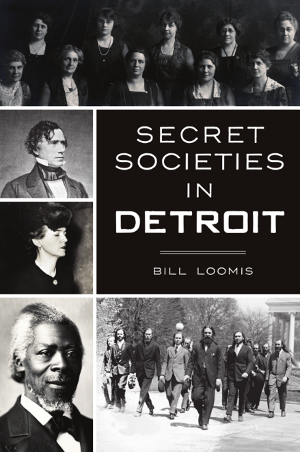
Every American knows Harriet Tubman. Immortalized in history, in film, and potentially even on the $20 bill, the story of her role in founding the Underground Railroad is part of the American story, and rightly so.
But Tubman wasn’t alone. The phrase ‘Underground Railroad’ is a slight misnomer, because there was never just one railroad through which slaves escaped the antebellum South. Rather, there were many railroads: many routes, many sympathetic abolitionists, many safehouses, and many “conductors” along the way. One of the most daring of these conductors was William Lambert, a free African-American man from Detroit, whose story historian Bill Loomis tells in his book Secret Societies in Detroit.
William Lambert: Courageous Conductor of Detroit’s Underground Railroad
Born in New Jersey in 1817, as a young man Lambert traveled with his Quaker schoolmaster around the northeast, learning about abolitionism and establishing himself both in business and in the church. Finally settling in Detroit, he became a member of the historic Second Baptist Church, and later, St. Matthew’s Protestant Episcopal Mission, whose gospel teachings informed his desire to secure freedom for the enslaved.

Though Cincinnati may be home to the National Underground Railroad Freedom Center, according to Loomis, Detroit was the busiest ‘railroad’ station before the Civil War, seeing as many as 40,000 African-Americans pass through to safety in nearby Canada. As a result, numerous secret societies arose there in the 1840s, as the abolitionist movement gained steam. With the passage of the Fugitive Slave Act in 1850, Lambert founded the African American Mysteries, also known as the Order of the Men of Oppression, to strengthen his segment of the route.
The Order of the Men of Oppression
The Order, modeled partly on other groups such as the Masons (of which Lambert was one), devoted itself to assisting escaped slaves. Using wagons with false bottoms, the Order traveled into the South through backroads and safehouses to find fugitives and bring them back to free land. Like the Masons, too, the Order had its own rituals—one of which, remarkably, involving the ‘enslavement’ of a new member. As Lambert recalled years later:
“[The conscript] was clad in rough and ragged garments, his head was bowed. His eyes blindfolded and an iron chain put about his neck. When his examination was over his eyes were unbound and he was admitted to the fellowship of the degree of captive. When he passed to that of the redeemed the chain and fetters were stricken off, although before that, when his eyes were unbound and he was a captive, he found about him all the members of the lodge present, each of them with a whip in his hand. In this way the organization maintained its typical character.”
When escaped slaves arrived in Detroit, the Order would feed them and clothe them and house them in one of their members’ homes, all under cover of night. As skilled in the clandestine arts as they were, Lambert further recalled that “We never lost a man by capture at this point, so careful were we, and we took over as high as 1,600 in one year.”

Poster for the Detroit Underground Railroad, 1856. Silas Farmer, Public domain.
A Legacy of Justice
Though precise figures will never be known, some historians estimate that the Order aided as many as 50,000 fugitives seeking safety and freedom in the North—a truly extraordinary legacy, especially given the very real threat of danger and death that followed every man and woman along the route. Longtime readers of Crime Capsule know we love to celebrate those courageous men and women who have fought for justice at different times and in different ways in American history, and we’re proud to honor Lambert here.
For more on Lambert, including his connections to famed abolitionist John Brown, Secret Societies in Detroit has the whole story—just don’t forget, when picking up your copy, your secret handshake!

Secret Societies in Detroit
By Bill Loomis
Secret societies have operated in Detroit for most of the city’s history. Many started for fun and companionship. Others had more serious ends in mind. The African American Mysteries: The Order of the Men of Oppression helped enslaved people escape the South for freedom in Canada. During the Civil War, so-called black lantern societies like the Knights of the Golden Circle and the Union League waged a covert war in Detroit and across the northern Midwest. In the last century, it wasn’t uncommon for a sober suburbanite to catch the train to Detroit and don yellow silk pantaloons, a purple fez and embroidered vest to drink “Tarantula juice.” Join Bill Loomis in this fascinating look into the secret world of these groups.
Looking for more to read during quarantine? Check out our quaran-reads here. Finding us for the first time, and want to learn more about what we do? Visit our welcome page and sign up for the Crime Capsule email newsletter. See you behind bars!



